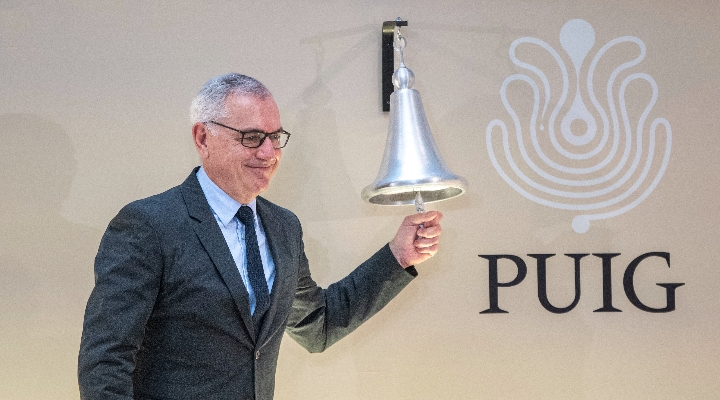From time to time, Morningstar publishes investment commentary and insight from asset managers, educational institutions, and registered investment advisers under as part of our third-party "Perspectives" feature. If you are interested in Morningstar featuring your content, please contact Online Editor Holly Cook at holly.cook@morningstar.com. Here, Schroders European credit fund manager Sarang Kulkarni dissects the struggle between bulls and bears for control of the credit market.
The Mexican standoff that has been brewing in the European credit markets since the start of this year seems to be heading towards a showdown. Volatility has picked up as the bulls jostle with the bears for control of the credit market, but does it all really have to end in high drama? Or can both sides learn to peacefully co exist (at least for now)?
Draw…
The bulls remain encouraged that credit is in the sweet spot over the medium term, as base rates stay lower for longer, and growth remains subdued, but positive nevertheless. Buy credit; sell government bonds!
On the other hand, the bears believe that a recovery is not sustainable; that the developed economies will shrink further, exposing further strains in housing and employment, and putting additional pressure on already stretched government finances. Risk assets are hence not the place to be. Buy government bonds; sell credit!
So what, exactly, are the contentions of these two opposing camps?
Employment
Bears: Employment remains weak. Public sector employment is falling as deficits get cut and the private sector is yet to pick up the slack.
Bulls: Employment is a lagging indicator. The new orders components of leading indicators continue to improve. Wage pressure is low, capacity utilisation is improving and cash flow generation remains strong. The Senior Loan Officers Survey reflects easier conditions for commercial and industrial credit (C&I).
Housing
Bears: Housing remains weak, with the market suffering from a continuing overhang from foreclosures and downsizing, and the removal of tax incentives.
Bulls: Low interest rates are keeping foreclosures under control. New lending is on very attractive terms (after accounting for defaults) as reflected in improved net interest margins at banks. Competition amongst banks is improving the supply of residential loans
Sovereign Credit
Bears: Sovereign credit concerns remain elevated. Although Europe seems to have stabilised for now, weakness in Asia and the US could put further pressure on overleveraged sovereigns.
Bulls: Concrete plans are in place for reducing sovereign deficits in Europe, and a safety net is available in the form of the European Financial Stability Facility (EFSF). Quantitative easing measures allow the ‘marginal buyer’ of bonds to step forward when most needed.
Growth
Bears: Growth will be weak--a double-dip is even possible--and inflation can easily morph into deflation. The 'Japanisation' of the US and Europe is not inconceivable.
Bulls: Structural changes in emerging markets (demographics, labour, rise of the middle class and so on) continue to power global growth. Currency adjustments will also aid in realigning national competitiveness. Emerging markets will effectively export inflation via commodity prices, global trade and so on, countering the deflationary pressures from developed markets. Growth in developed markets will remain low, but positive. Inflation will also remain subdued.
Savings Rates
Bears: Savings rates will remain high as confidence stays low. Consumers will not bail out the economy.
Bulls: The high savings rate will support lower yields. Risk assets are cheap, thus increased savings will translate into greater demand for risk assets as investors hunt for yield.
Emerging Markets
Bears: Emerging markets cannot decouple from developed markets (in the near term) given their export-driven growth models.
Bulls: Domestic demand is slowly becoming an important driver of emerging market growth. High savings rates in emerging markets will help them reduce their dependence on overseas funding. Demand for emerging market debt is high as investors look for yield and take comfort from the strong economic outlook.
Balance Sheets
Bears: Corporates and banks have a wall of refinancing to get over, and supply will be high as bank lending remains constrained.
Bulls: Default rates can remain low in the near term as most short-term liabilities have been pre-funded at attractive levels. Corporates and banks continue to delever their balance sheets, using earnings cash flows to reduce debt. Corporates and banks are in a stronger position to deal with an economic slowdown than they were in 2008.
Yields
Bears: Falling government bond yields and flattening yield curves point to economic weakness ahead.
Bulls: Yield curves remain steep, cash rates remain low and opportunities to earn returns over the next few years are limited.
Banks
Bears: Banks are vulnerable given their exposure to economic risk and sovereign credit risk. Bank T1 bonds will remain volatile as some banks may choose to defer coupons and not call bonds on their first call dates.
Bulls: Bank stress tests and changes in financial regulations are positive developments. Banks have been proactive in rebuilding their capital bases to withstand some very onerous economic conditions. The new financial regulations are positive for existing T1 structures as it incentivises banks to call them and replace them with newer, loss-absorbing structures.
Spreads
Bears: Spreads have tightened significantly from the 2009 peak. As the economy falters, there is ample scope for spreads to widen.
Bulls: Spreads have tightened, but government bond yields have fallen sharply as well. Spreads as a percentage of yields remain very high. Credit fundamentals remain strong and the additional carry over government bonds looks attractive enough to attract asset allocators out of government bonds into credit.
Who Wins the Battle?
As can be seen from the chart below, current spreads are already pricing in a slowdown, with most of the bad news already in the price.

Spreads are very sensitive to GDP, so if a double-dip recession does occur, then investors can expect spreads to move materially wider. As far as we are concerned, however, this is not the base case scenario. We expect, on balance, that the bulls will win out. Against a backdrop of modest, but positive economic growth, we should see spreads tightening further from their current levels.
The views and opinions contained herein are those of Sarang Kulkarni, fund manager, European credit, and may not necessarily represent views expressed or reflected in other Schroders communications, strategies or funds.
All views expressed in this third party article are those of the author(s) alone and not necessarily those of Morningstar. Morningstar is not responsible for the comments nor will it be liable in any way for any information provided by the author.






















